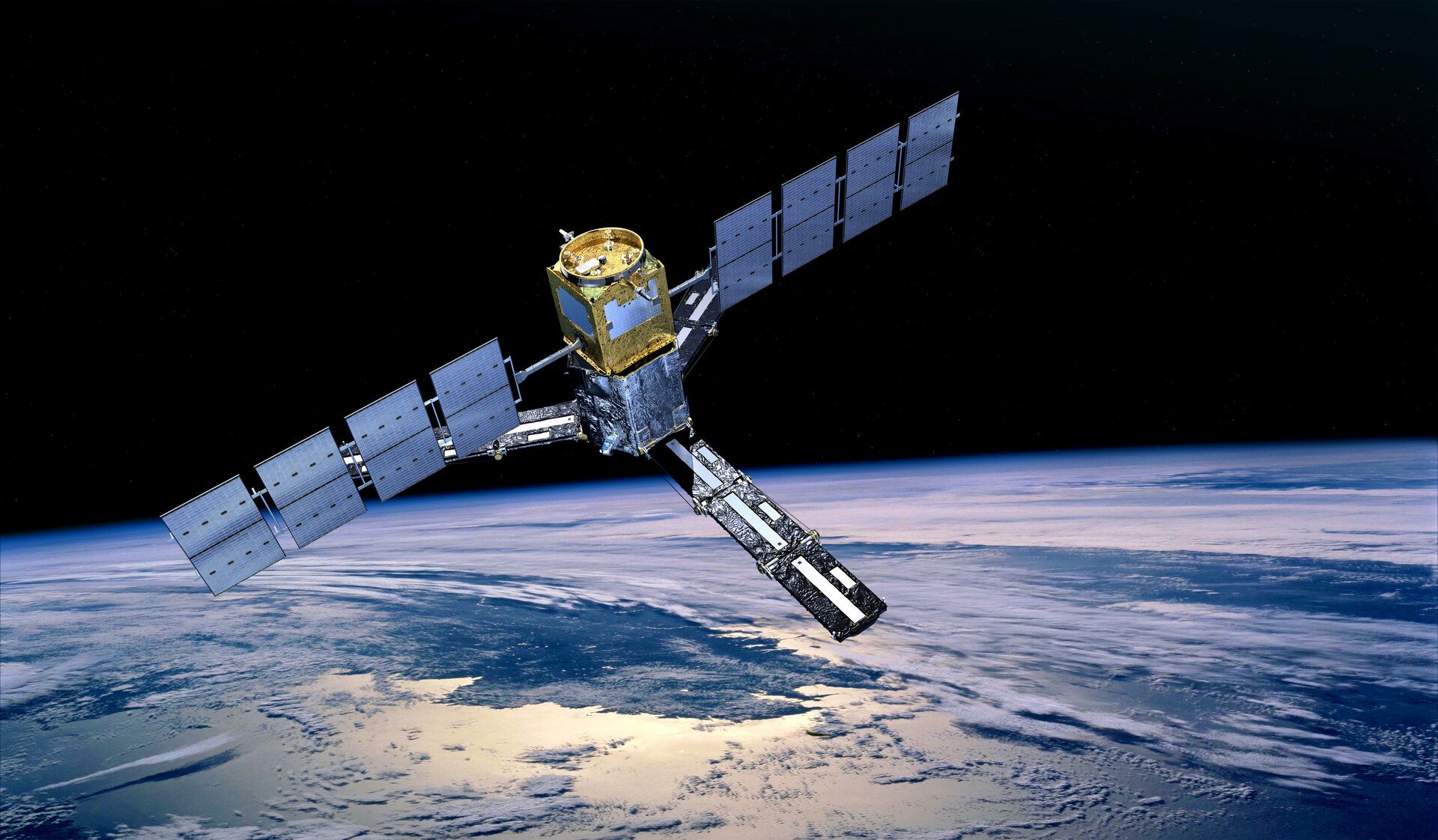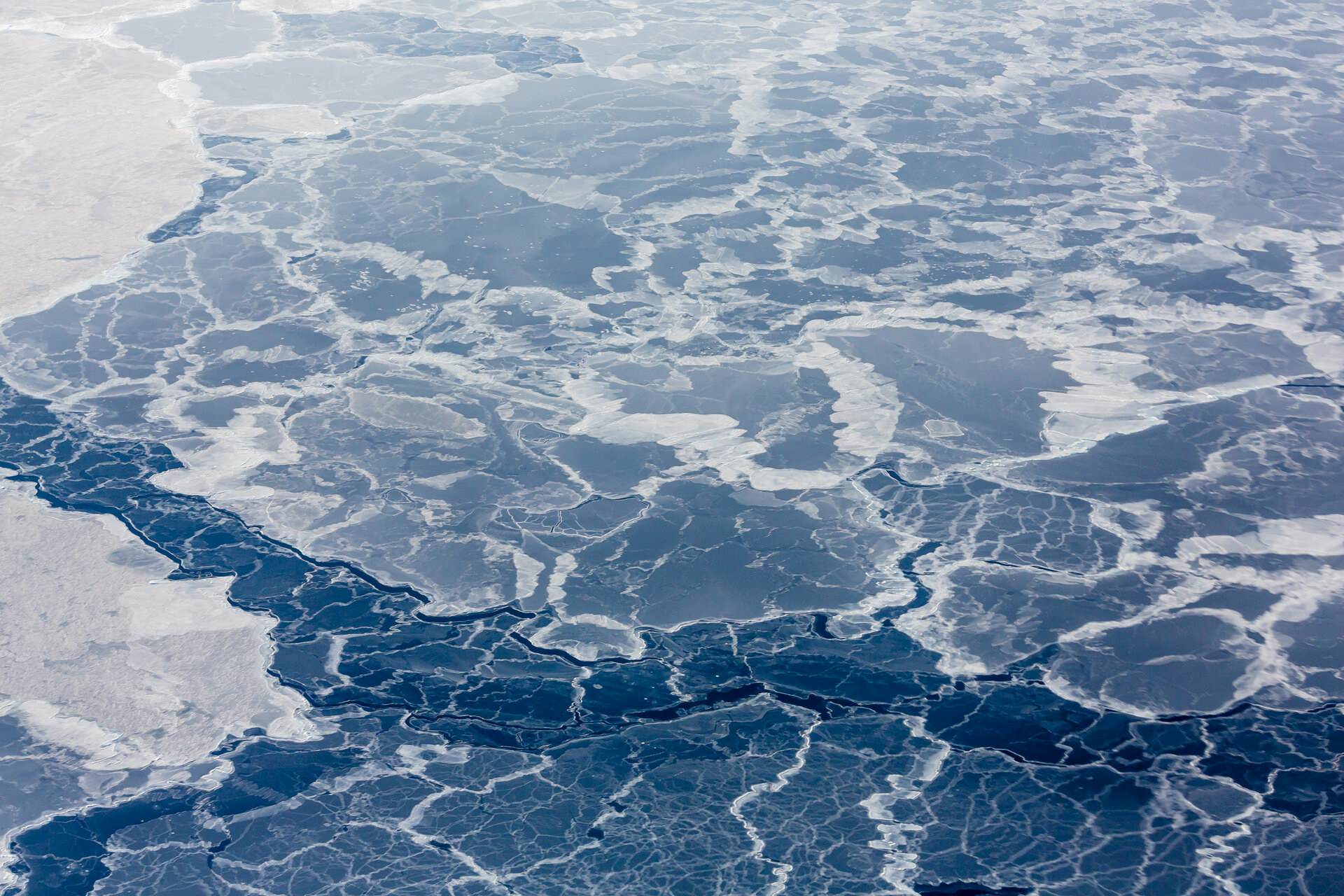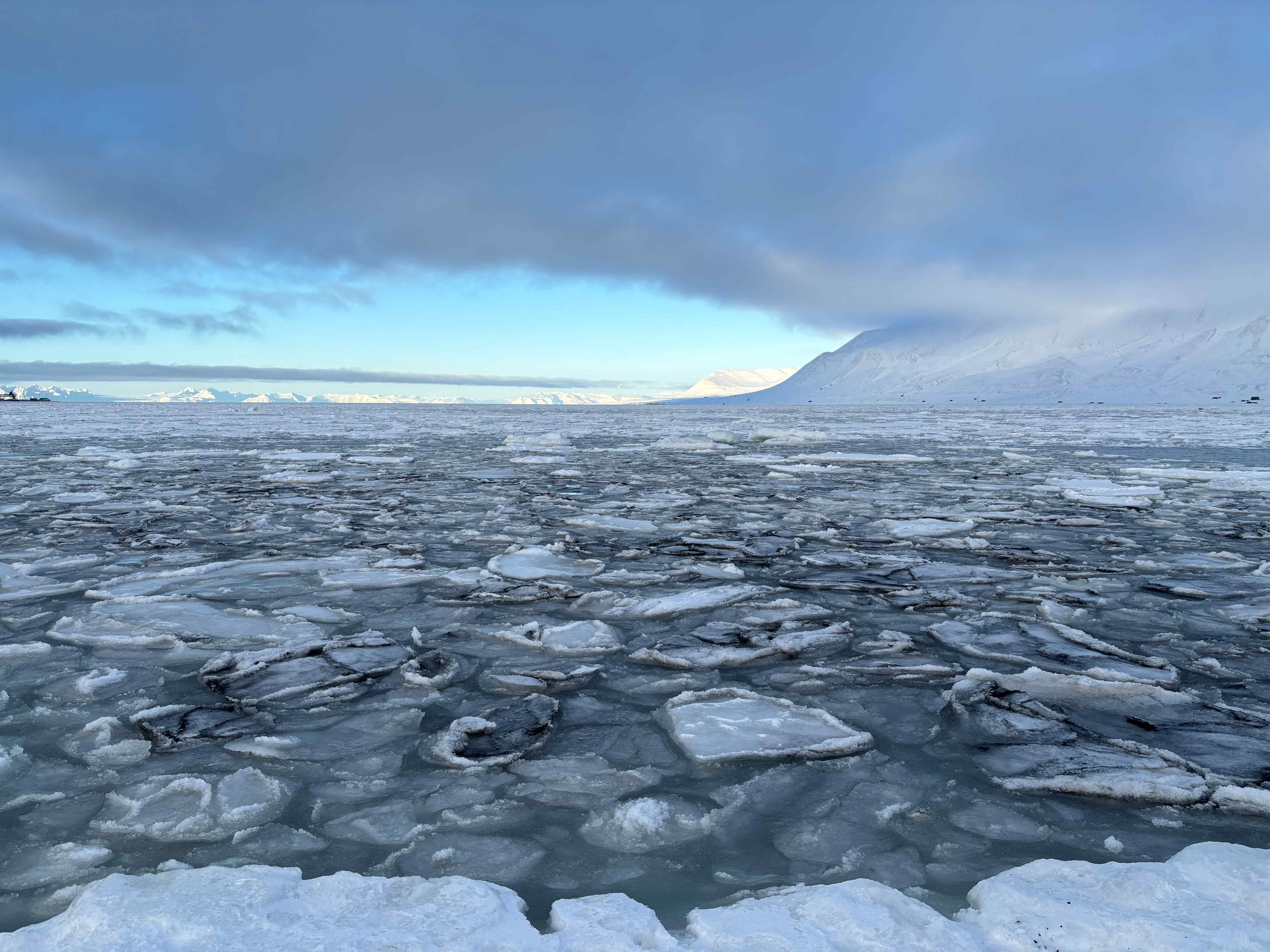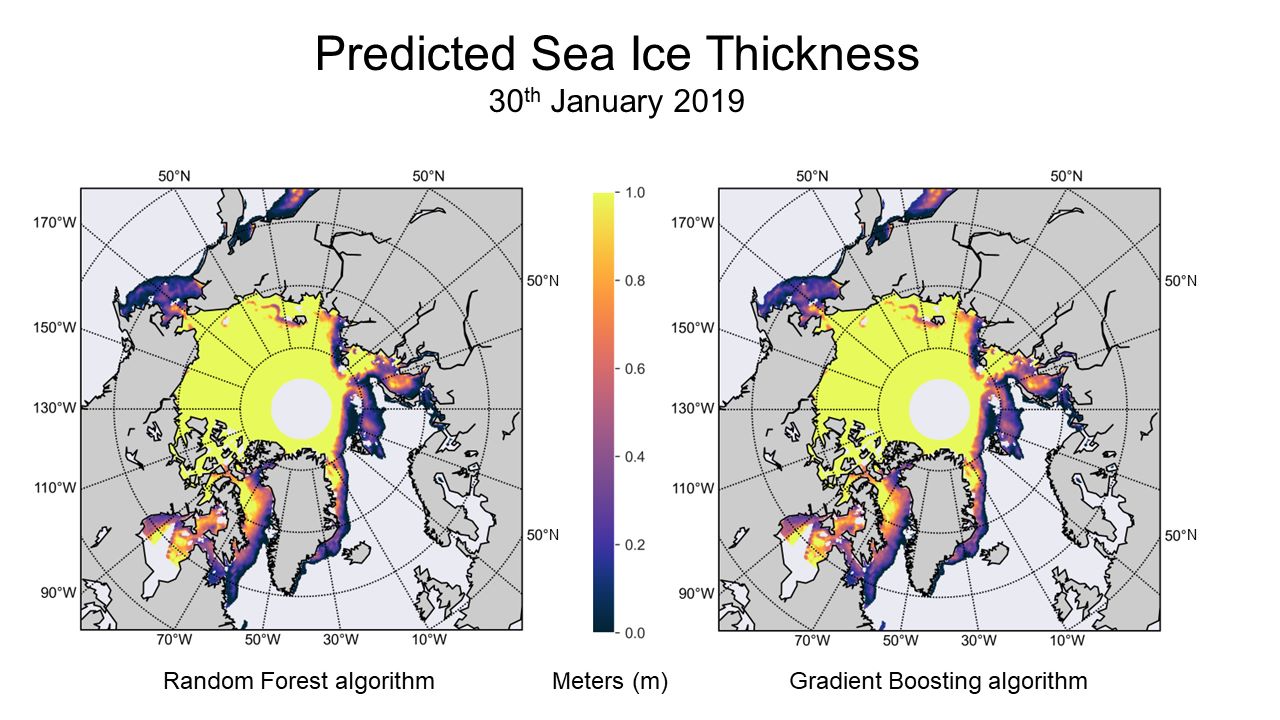 SMOS satellite © ESA/AOES Medialab
SMOS satellite © ESA/AOES Medialab
New machine learning methodology can estimate thin sea ice thickness from SMOS measurements. Results obtained show great agreement with in-situ data, opening the door to a potential improvement of SMOS sea ice data processing.
Thin sea ice is an essential component of the Arctic’s physical environment, playing a crucial role in climate and weather regulation by mediating heat and water exchange between the ocean and atmosphere. It also serves as a key indicator of climate change, and conditions ship operations in the area.
 Thin sea ice on the Arctic Ocean. © ESA, S. Hendricks/AWI
Thin sea ice on the Arctic Ocean. © ESA, S. Hendricks/AWI
Earth Observation is vital for monitoring thin sea ice, understanding its dynamics, and making accurate predictions. ESA’s Soil Moisture and Ocean Salinity (SMOS) mission, launched in 2009, contributes to this effort with its onboard passive microwave radiometer. This instrument measures the surface brightness temperature, which, after processing, can provide thickness estimates of thin sea ice (ice thickness up to 1 meter).
Brightness temperature is invisible to the human eye as it depends on the intensity of electromagnetic energy emitted from a specific source in the microwave region of the spectra. It is influenced by various sea ice conditions, including salinity, temperature, the presence of snow, and the thickness of the sea ice itself.
 Pancake ice near the coast of Svalbard, Norway © Ferran Hernández.
Pancake ice near the coast of Svalbard, Norway © Ferran Hernández.
In a recent study conducted by isardSAT – an Earth Observation SME based in Barcelona – and the Institut de Ciències del Mar (ICM-CSIC), two machine learning algorithms (Random Forest and Gradient Boosting) obtained improved sea ice thickness estimates. Trained with SMOS brightness temperature values and simulated data from the Burke physical model (Burke et al., 1979), both algorithms provide sea ice thickness estimates that are in strong similarity with the the current ESA product, with even slight improvements.
 Arctic sea ice thickness map generated with the Random Forest and Gradient Boosting algorithms for 30th January 2019. © isardSAT
Arctic sea ice thickness map generated with the Random Forest and Gradient Boosting algorithms for 30th January 2019. © isardSAT
Improving the accuracy of sea ice thickness estimates
Currently, two algorithms are used to retrieve thin sea ice thickness from SMOS measurements: ESA’s official product, generated with a semi-empirical algorithm developed by the Alfred Wegener Institute (AWI), and an empirical approach distributed by the University of Bremen (UB).
The machine learning methodology developed in this study demonstrates a strong correlation with ESA’s official product. Furthermore, when validated against ground-truth data from mooring buoys of the Beaufort Gyre Exploration Project (BGEP), the results show an even higher correlation compared to the existing ESA product, moderately reducing some of its errors.
“Thanks to the reduced number of computational resources required by this methodology, it works faster and obtains better results than the original SMOS product”, explains Ferran Hernández Macià, researcher involved in the project. He is working on this methodology as part of his PhD, which focuses on improving sea ice thickness retrieval algorithms from satellite observations using Machine Learning techniques.
“In the future, advanced deep learning algorithms like these should be explored to improve not only spatial but also temporary consistency of satellite data”, adds Hernández Macià. “This could help to obtain reliable near-real time sea ice predictions, necessary for ship operations, but also to study the consequences of the climate change”, explains the researcher.
Reference:
F. Hernández-Macià, C. Gabarró, G. S. Gomez and M. J. Escorihuela, “A Machine Learning Approach on SMOS Thin Sea Ice Thickness Retrieval,” in IEEE Journal of Selected Topics in Applied Earth Observations and Remote Sensing, vol. 17, pp. 10752-10758, 2024, doi: 10.1109/JSTARS.2024.3406921.